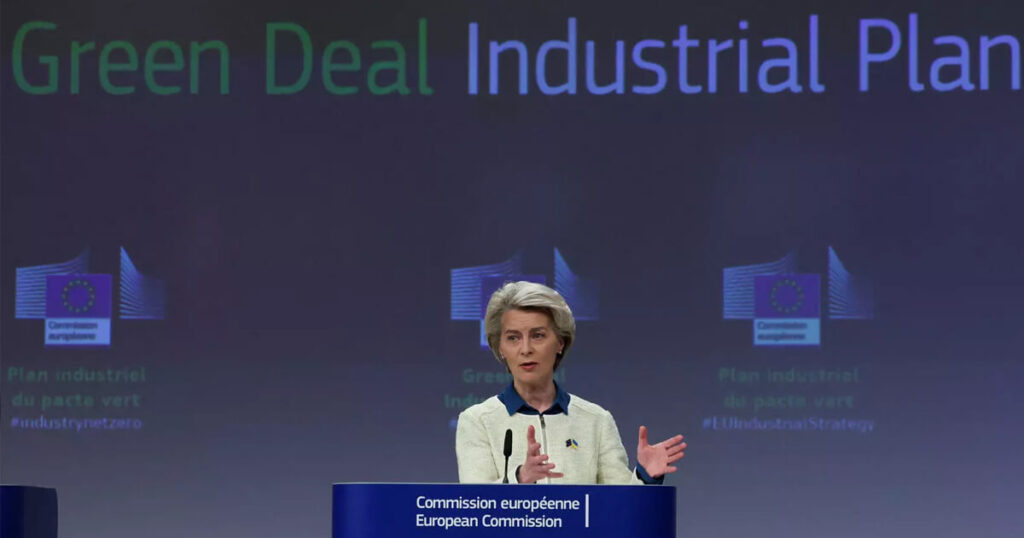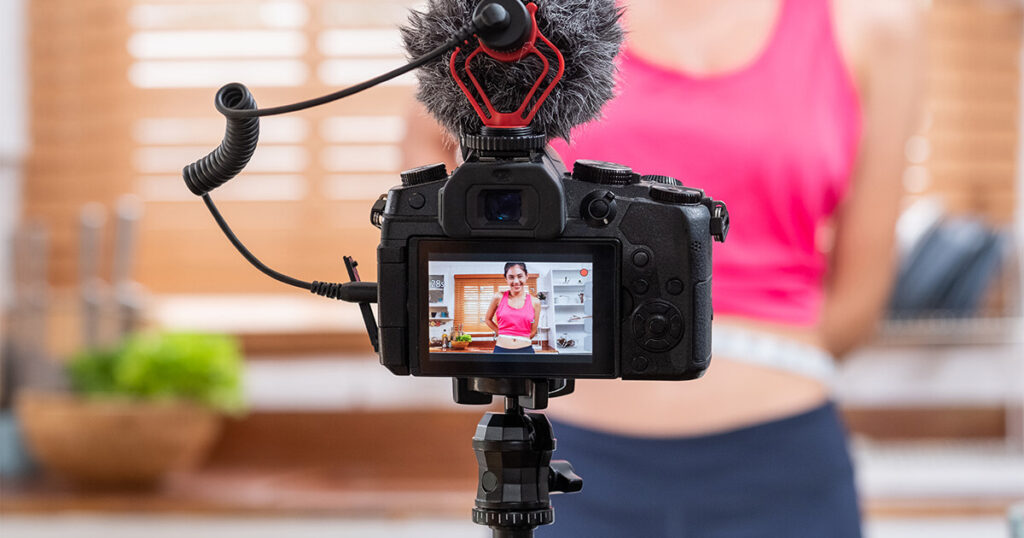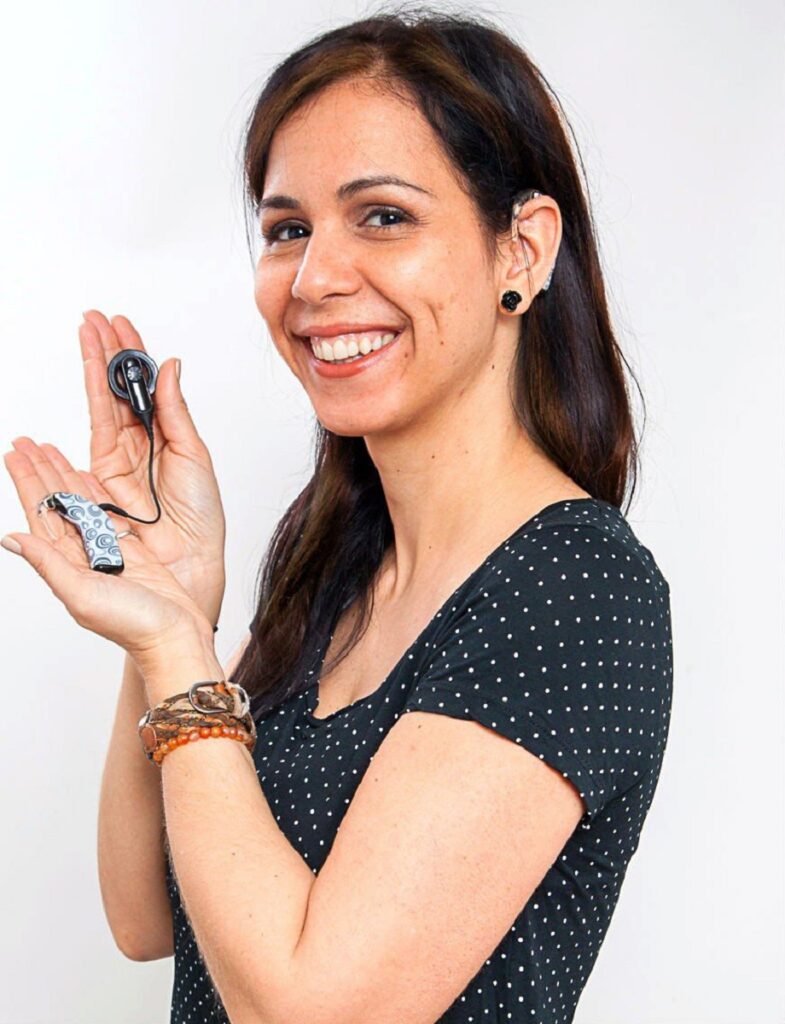Leading Ladies of Diversity: Jessica Alba, Carla Vernón, Titi Cole, and Tracey Brown Spearhead Global Conversation on Boardroom Diversity

LOS ANGELES, /PRNewswire/ – On Nov. 14, 2023, 50/50 Women on Boards™ will present The Global Conversation on Board Diversity™, an annual broadcast designed to accelerate positive change in corporate boardrooms. This remarkable occasion will cap off a series of 20 in-person strategic networking sessions held across the globe, culminating in a one-hour virtual conversation with global women leaders. The virtual broadcast will feature a live interview with Jessica Alba, Founder, Chief Creative Officer, and Board Director of The Honest Company. She is also a Board Director for Baby2Baby, Yahoo, and LA28. Joining her in the forum will be Carla Vernón, Chief Executive Officer and Board Director of The Honest Company, who also serves on the Board of Trustees at Princeton University. Additionally, distinguished keynote speakers Titi Cole, Head of Legacy Franchises at Citi and Board Director of Datadog and CARE USA, and Tracey Brown, EVP and President, Walgreens Retail & Chief Customer Officer, and Board Director of Weight Watchers and formerly Yeti, will join the broadcast. Betsy Berkhemer-Credaire, Chief Executive Officer of 50/50 Women on Boards, shared, “50/50 Women on Boards continues to generate momentum toward the goal of having 50% of corporate board seats held by women, with at least 20% of all seats held by women of color. While we’ve made strides, progress has slowed, with women gaining only one percentage point of board seats in the last year, resulting in 29% representation, the lowest increase in five years. As we strive to create more inclusive boardrooms, it’s crucial that we tap into the wealth of diverse perspectives and experiences that leaders in our communities have to offer. Through The Global Conversation on Board Diversity and our in-person city events, we empower women to pursue board service opportunities by building their networks.” Heather Spilsbury, Chief Operating Officer and Chief Marketing Officer of 50/50 Women on Boards, emphasized, “Whether you’re an aspiring director or passionate about advancing diversity and inclusion in the boardroom, these events catapult the momentum to advance women to corporate boards. They also remind corporations that a diverse board is a strategic business decision proven to increase profitability, productivity, and workforce engagement.” During the program, 50/50 Women on Boards will pay tribute to the 50 Women to Watch for Boards finalists. This momentous occasion will mark the first gathering of all 50 women, celebrating 50/50 Women in Boards’ inaugural list. This list highlights a group of exceptionally qualified and vetted women leaders with diverse backgrounds across various sectors in North America, all of whom are ready to serve on public company boards. Global organizations such as EY, which holds the title of Premier Global Sponsor, as well as Official Airline United Airlines, Mastercard, Wells Fargo, Equilar, McKesson, and Jamison, will be recognized for their support. These organizations understand the critical importance of tapping into diverse perspectives to create inclusive boardrooms. 50/50 Women on Boards’ in-person event series spans across 20 cities, including Los Angeles, Chicago, Austin, Charlotte, Phoenix, Tampa Bay, Seattle, Dallas-Fort Worth, Washington D.C., San Diego, Houston, Portland, Boston, Northern California, New York, Toronto, Mexico City, London, Athens, and Tokyo. These events will culminate with the virtual Global Conversation on Board Diversity. Join the Conversation To learn more about this transformative event and secure a virtual seat, please visit https://5050wob.com/virtual-global-conversations-on-board-diversity. About 50/50 Women on Boards (50/50WOB)50/50 Women on Boards™ (50/50WOB) is the leading global nonprofit education and advocacy campaign driving the movement toward gender balance and diversity on corporate boards. Since 2010 the campaign has published its 50/50 Women on Boards Gender Diversity Index™ directory and research reports to track the gender and racial diversity of Russell 3000 company board directors. Educational programs and advocacy efforts produced by 50/50WOB include its annual Global Conversation on Board Diversity™, year-round board training programs for individuals and corporate groups, and the Networking Hub for alumni to connect to experts and corporate directors in support of their board journey. For more information, visit www.5050wob.com Source 50/50 Women on Boards
Who is Afraid of U.S. Green Subsidies? Exploring European Industry Impacts

The discussion on the direct and indirect effects of U.S. Green Subsidies on European industries began a year ago. These subsidies encompass financial incentives, grants, and support provided by the U.S. government to encourage sustainable practices. While aimed at industries striving to reduce carbon emissions, and promote renewable energy sources, and eco-friendly technologies, their implementation has met resistance in Europe. The goal of fostering sustainable practices and technologies that contribute to environmental preservation and the fight against climate change appears to inadvertently encourage industry relocation to the U.S. This has led to increased competitiveness of American products and technologies, compelling European industries to invest more in research and development to remain competitive and keep pace with technological advancements fueled by U.S. subsidies. Trade relations between the U.S. and Europe could be impacted. Overly subsidized U.S. products flooding global markets may trigger trade tensions and disputes, affecting European industries and supply chain dynamics. European industries relying on specific resources may face disruptions due to changes in global supply chains driven by subsidized U.S. sectors. One year later, European industries responded diversely to U.S. green subsidies, adopting strategies to adapt to the changing landscape. On April 4, 2023, the European Commission released an updated State Aid Guiding Template, aiming to align national Recovery and Resilience Plans (RRPs) with EU State Aid regulations. These changes aim to reinforce the European Green Deal and diminish reliance on Russian fossil fuels, echoing the goals of the REPowerEU Plan. The Recovery and Resilience Facility (RRF), a core component of the €800 billion NextGenerationEU initiative, coordinates cross-border and domestic projects’ funding. Its objectives include addressing pandemic-induced economic impacts, expediting green and digital transitions, and enhancing Union resilience. The RRF Regulation, revised in February 2023, now includes dedicated REPowerEU sections in Member States’ RRPs, with adjusted plans due by April 30, 2023. In December 2020, the Commission introduced templates for State Aid measures in RRPs, aligned with the “European flagships” of the 2021 Sustainable Growth Strategy. As a response to integrating REPowerEU, the Commission updated relevant templates, aligning with the 2022 Guidelines on State Aid for Climate, Environmental Protection, and Energy, the revised State Aid Framework for Research, Development, and Innovation, the new Temporary Crisis and Transition Framework, and amendments to the General Block Exemption Regulation.
Navigating the Future: How Aging Populations Shape Business Strategies
As the world experiences a demographic shift towards an aging population, the intersection of technology, healthcare, and wearables holds significant promise in enhancing the quality of life for seniors. With advancements in medical research and technological innovation, the potential to empower the elderly by addressing their unique needs and challenges has never been greater. In this article, we explore how the convergence of these domains is shaping a new era of healthcare, where wearables play a crucial role in fostering well-being, monitoring health, and promoting active aging. The global aging phenomenon presents both opportunities and challenges. Longer life expectancies bring with them a higher incidence of chronic diseases and age-related conditions. However, technology is emerging as a powerful ally in addressing these concerns. From smartphone apps that remind seniors to take their medications to wearable devices that track vital signs, technology is transforming how healthcare is delivered. Wearable technology, once associated primarily with fitness tracking, has evolved into an essential tool for healthcare monitoring and management. Smartwatches, fitness bands, and other wearables equipped with sensors can track heart rate, sleep patterns, activity levels, and more. For seniors, these devices offer a non-intrusive means of collecting vital health data, allowing them and their caregivers to proactively manage their well-being. One of the most significant benefits of wearables is the ability to remotely monitor patients. Healthcare providers can receive real-time data on a senior’s health metrics, enabling early intervention and personalized treatment plans. This technology is especially valuable for those with chronic conditions like diabetes, heart disease, and hypertension, as it reduces the need for frequent in-person visits and empowers individuals to take charge of their health. Wearables not only monitor health but also encourage seniors to stay active. Many devices offer features such as step counting, activity challenges, and guided exercises. These features promote physical activity, which is crucial for maintaining mobility, cognitive function, and overall well-being in older adults. Another challenge faced by aging populations is social isolation, which can lead to mental health issues. Technology plays a role here as well. Video conferencing platforms, social media, and messaging apps allow seniors to stay connected with loved ones and engage in virtual communities, mitigating feelings of loneliness and fostering a sense of belonging. Looking ahead, the integration of wearables with artificial intelligence (AI) and data analytics holds immense potential. AI-powered algorithms can analyze wearables’ data to detect subtle health changes and predict potential issues. This proactive approach to healthcare can prevent complications and hospitalizations, ultimately leading to improved quality of life for seniors. The amalgamation of aging, technology, healthcare, and wearables is reshaping the way we approach senior care. From promoting active aging to offering remote monitoring solutions, wearables are at the forefront of this transformation. As we navigate the challenges posed by an aging population, technology continues to provide innovative solutions that empower seniors to lead healthier, more independent lives. The future holds great promise, as we harness the power of technology to enhance the well-being of our older generations.
As Small As a Bug. The Robot That Can Land and Take Off

Insects that can perform a flapping-wing flight, climb on a wall, and switch smoothly between the 2 locomotion regimes provide us with excellent biomimetic models. However, very few biomimetic robots can perform complex locomotion tasks that combine the 2 abilities of climbing and flying. Here, we describe an aerial–wall amphibious robot that is self-contained for flying and climbing, and that can seamlessly move between the air and wall. It adopts a flapping/rotor hybrid power layout, which realizes not only efficient and controllable flight in the air but also attachment to, and climbing on, the vertical wall through a synergistic combination of the aerodynamic negative pressure adsorption of the rotor power and a climbing mechanism with bionic adhesion performance. On the basis of the attachment mechanism of insect foot pads, the prepared biomimetic adhesive materials of the robot can be applied to various types of wall surfaces to achieve stable climbing. The longitudinal axis layout design of the rotor dynamics and control strategy realize a unique cross-domain movement during the flying–climbing transition, which has important implications in understanding the takeoff and landing of insects. Moreover, it enables the robot to cross the air–wall boundary in 0.4 s (landing), and cross the wall–air boundary in 0.7 s (taking off). The aerial–wall amphibious robot expands the working space of traditional flying and climbing robots, which can pave the way for future robots that can perform autonomous visual monitoring, human search and rescue, and tracking tasks in complex air–wall environments. Insects possess remarkable flying and climbing abilities after millions of years of evolution. Their complex flapping flight and versatile posture adjustments enable them to achieve high lift, agile flight, and precise movements. Insects exhibit different adhesion mechanisms on various surfaces, using claws for rough surfaces and smooth pads for smoother ones. Wall-climbing and aerial robots have been developed to mimic these abilities, with wall-climbing robots using claws or adhesive pads, and aerial robots achieving flight with flapping-wing mechanisms. However, each type of robot has limitations in terms of energy consumption, load capacity, and interaction with the environment. Aerial–wall amphibious robots, combining both aerial and wall-climbing capabilities, offer a solution to overcome these limitations. These robots can transition between climbing and flying modes, enabling them to reach challenging areas and adapt to various environments. The development of such cross-medium robots is a significant step towards achieving insect-like maneuverability and stability for various applications. Discover the benefits and outcomes, along with additional in-depth information about this remarkable research, by clicking here. Source: qian li, haoze li, huan shen, yangguang yu, haoran he, xincheng feng, yi sun, zhiyuan mao, guangming chen, zongjun tian, lida shen, xiangming zheng , and aihong ji
The Connection Between Anthropogenic Global Warming and Extreme Climate Events

The world is witnessing a noticeable increase in the frequency and intensity of extreme weather events such as hurricanes, droughts, heat waves, and heavy rainfall. This phenomenon can be attributed to anthropogenic global warming, a consequence of human activities that release greenhouse gases into the atmosphere. The primary driver of anthropogenic global warming is the burning of fossil fuels, which releases carbon dioxide (CO2) and other greenhouse gases into the atmosphere. These gases trap heat, leading to a gradual rise in global temperatures. As the Earth’s average temperature increases, it disrupts the delicate balance of the climate system, triggering a cascade of interconnected effects. One significant outcome of this warming trend is the alteration of atmospheric circulation patterns. Warmer air holds more moisture, leading to more intense precipitation events. This, in turn, increases the likelihood of flooding and landslides. On the flip side, regions experiencing prolonged droughts are becoming more vulnerable to wildfires due to drier conditions. Furthermore, the warming of ocean waters plays a critical role in intensifying hurricanes and typhoons. Warmer waters provide more energy for these storms to develop and strengthen, resulting in more powerful and destructive events. Rising sea levels, another consequence of global warming, exacerbate the impacts of storm surges and coastal flooding. Heatwaves have also become more frequent and intense due to global warming. Higher temperatures can lead to extended periods of extreme heat, which can have dire consequences for human health, agriculture, and ecosystems. Heat stress, crop failure, and disruptions to ecosystems are just a few of the outcomes associated with prolonged heat waves. In conclusion, there is a clear and undeniable connection between anthropogenic global warming and the increase in extreme climate events. The excessive release of greenhouse gases into the atmosphere by human activities is disrupting the Earth’s climate system, resulting in more frequent and severe weather phenomena. Addressing this issue requires global efforts to reduce emissions and transition towards more sustainable energy sources.
The Winning Play: How Sports Stars Score Big in the World of Marketing

What do Cristiano Ronaldo, Dwayne Johnson, Virat Kohli, Lewis Hamilton, Ronda Rousey, Serena Williams, and Sania Mirza have in common? Sports and marketing, two distinct worlds that have found a harmonious partnership, are redefining the way brands connect with audiences. In this era of relentless competition for consumers’ attention, brands are increasingly turning to sports stars as their secret weapon to amplify their messages. Beyond their achievements on the field, these athletes are wielding their influence to create powerful marketing campaigns that not only elevate brand visibility but also establish emotional connections with audiences spanning the globe. Gone are the days when an athlete’s involvement in marketing was limited to endorsing products through commercials. Today, sports stars have evolved into influential brands in their own right. Their personal stories, dedication, and triumphs contribute to a unique narrative that resonates deeply with fans. Marketers recognize the immense potential in aligning their brands with athletes who embody values that align with their message. The story of an underdog athlete’s journey to success can mirror the struggles and aspirations of consumers, fostering a relatable and genuine connection. In an era where authenticity reigns supreme, sports stars have the upper hand. Their raw emotions, unfiltered reactions, and candid insights make them relatable to fans. Brands that collaborate with athletes gain access to this authenticity, enabling them to connect with audiences on a personal level. From heartwarming charity initiatives to candid glimpses into their daily lives, athletes create content that transcends the superficial, building a sense of camaraderie with their followers. When this authenticity is seamlessly integrated into marketing campaigns, it strikes a chord with consumers and bolsters brand loyalty. Sports have a universal language that transcends geographical boundaries. As a result, sports stars have the unique ability to attract a global audience. By partnering with athletes from diverse backgrounds and disciplines, brands can tap into new markets and demographics. A soccer superstar’s influence can extend beyond their home country, reaching fans across continents. This global appeal not only increases brand exposure but also enhances a brand’s reputation as one that embraces diversity and inclusivity. Athletes are not just game-changers on the field; they’re also champions for social causes off the field. Many sports stars use their platforms to raise awareness about issues close to their hearts. Brands that align with an athlete’s philanthropic endeavors demonstrate their commitment to social responsibility. Collaborating with athletes who are passionate about environmental conservation, education, or health initiatives not only generates positive publicity but also contributes to meaningful change. As technology continues to reshape the marketing landscape, the role of sports stars is only expected to grow. Virtual reality experiences, interactive social media content, and personalized campaigns are set to revolutionize how athletes and brands interact with consumers. The future of sports marketing lies in creating immersive experiences that blur the lines between entertainment and engagement. In the dynamic world of marketing, sports stars are emerging as MVPs, leveraging their influence to create memorable campaigns that resonate with audiences worldwide. As brands recognize the value of authenticity, relatability, and global appeal, the relationship between sports and marketing is poised to flourish. Through this partnership, brands are not only winning the game of consumer attention but also making a lasting impact on the hearts and minds of their audience.
The Unseen Consequences of Conflict: Wars’ Far-Reaching Impact

Singapore, November 1st, 2023 – Wars, regardless of their location or scale, bring a chain of horrors that extends beyond the battlefield, leaving indelible marks on both the environment and sustainability efforts. Recent events have highlighted the grim reality often overshadowed by the immediate conflict. The ongoing conflicts in different parts of the world serve as a reminder of how environmental preservation becomes a sacrifice amid geopolitical tensions. The toll on the environment during times of conflict is staggering, surpassing the visible destruction of buildings and infrastructure. Wars disrupt sewage systems, damage water reservoirs, harm schools and hospitals, and more. This disruption unravels the very fabric of sustainability and geopolitical stability, revealing the stark interconnectedness of our world. Industrial facilities and infrastructure frequently bear the brunt of warfare, leading to pollution and environmental degradation, which impedes global efforts to combat climate change and promote sustainability when coordinated action is needed most. The aftermath of war frequently exposes severe damage to industrial facilities, releasing toxic chemicals into the environment, and threatening both human health and ecosystems. Chemical plants, mines, and other industrial sites targeted during conflicts unleash pollutants into the land and air, with long-lasting implications for the environment. The impact extends beyond borders and can affect global ecosystems. In regions affected by conflict, sustainability initiatives are significantly hindered. Efforts to transition to low-carbon economies, reduce greenhouse gas emissions, and promote renewable energy are often diverted towards military expenses and post-war reconstruction. This diversion hampers progress and underscores the intricate relationship between war and sustainability. On an international scale, the distraction caused by conflicts has compromised broader sustainability agendas. Agreements like the Paris Agreement, aimed at limiting global temperature rise and addressing climate change, are impeded by the urgent demands of conflict. The accord’s goal of limiting global warming below 2 degrees Celsius above pre-industrial levels, ideally capping it at 1.5 degrees Celsius, faces setbacks as conflicts divert attention and resources away from essential climate action. The financial impact on sustainability is substantial, with estimated economic losses and damages reaching staggering figures. Infrastructure damage, income losses, and increased poverty rates often plague conflict-ridden regions. Trade disruptions and a decline in international investments further undermine economic growth and sustainability efforts. In the midst of the chaos and devastation, it becomes clear that addressing the environmental and sustainability impacts of conflict is as vital as resolving the conflict itself. The environment suffers irreversible harm, sustainability initiatives are stunted, and geopolitical tensions escalate. As the world navigates through the turmoil, it is imperative that focused efforts are directed towards mitigating the ecological and humanitarian costs of war. Ultimately, a more sustainable and just future hangs in the balance, driven by collective responsibility and international cooperation. The message is clear: the consequences of war extend far beyond the human and geographical scope, encompassing the entire planet. As we navigate the challenges posed by conflicts, let us remain mindful of the critical need to safeguard our environment and secure a sustainable future for all.
U-Scan: The Automated In-home Digital Urine Analysis System by Withings

Sophisticated urine analysis allows users to monitor metabolic insights and empowers women to manage monthly cycles Withings is introducing the U-Scan, a miniaturized health lab that hygienically sits within a toilet bowl, unlocking health information in daily urine. Recognized as a CES 2023 Innovation Award honoree, U-Scan uses a pebble-shaped reader and changeable analysis cartridges to assess specific biomarkers without external sample capture or strips. The device will debut in Europe with two consumer health cartridges, with medical versions following in the future. The device is in development in the US and will not be available until FDA clearance. Withings Health Solutions is making the technology available for research purposes. U-Scan performs three tasks: Automated Sample Capture, which uses a rechargeable U-Scan reader within a toilet bowl, and Biomarker Analyses, which use a rotating cylindrical U-Scan cartridge with dozens of miniaturized test pods. The module system allows Withings to continually develop and support the analysis of biomarkers associated with various medical and health conditions. Combined with measurements from Withings’ ecosystem, U-Scan will create even more insights for users and potentially help prevent diseases, improve quality of life, and reduce healthcare costs. A game changer in home health, U-Scan is designed to be a versatile platform consisting of a technologically advanced pebble-shaped reader and changeable analysis cartridges designed to assess specific biomarkers without the need for external sample capture or strips. Then, with seamless sync to the Withings Health Mate app, it will provide a wealth of actionable insights based on daily readings. Withings is dedicated to creating a world where people can see their path to better health, and feel supported to pursue it using devices designed to fit beautifully into daily life, supported by information that unlocks long-term health insights and offers programs to create meaningful change. Withings has not provided a timeline for the US and the rest of the world release as of now. Find out more here.
Giving Voice to Deafness: The Unheard World of Oral Communicators

When envisioning a person with hearing loss, it’s common for the derogatory stereotype of a “deaf-mute” to come to mind – someone who doesn’t speak due to their inability to hear. This generalization, though far from accurate, has persisted for years, overshadowing the existence of deaf individuals who engage in oral communication. In reality, there are those within the deaf community who, despite their hearing loss, actively use spoken language to express themselves. Deaf individuals who speak, often referred to as “oralists” or “oral deaf,” navigate a multifaceted reality. Many of them have experienced hearing impairment since birth or lost their hearing at an early age. Through intense speech therapy and, in some cases, the support of auditory devices like hearing aids or cochlear implants, they have embraced spoken language as their primary mode of communication. Despite their ability to communicate orally, oralists often face unique challenges. Many people assume that all individuals with hearing loss use sign language, perpetuating a lack of awareness about their existence. As a result, oralists might encounter misjudgments and dismissals of their hearing impairment. These misconceptions can lead to frustration and feelings of invisibility. In the realm of education, oralists have distinct experiences. While some may attend mainstream schools, others opt for specialized programs that prioritize speech and auditory skills. Access to appropriate support services, such as interpreters or note-takers, becomes crucial in ensuring that oralists have equal educational opportunities. In the end, the world of deaf individuals who speak serves as a reminder that communication is a vast and nuanced landscape. It’s a testament to the human spirit’s adaptability, resilience, and determination to find a voice, regardless of the medium. By acknowledging the diverse ways in which individuals navigate the challenges of hearing impairment, we take a step toward a more inclusive and empathetic society. As my friend Alice Inácio from Portugal aptly puts it: “Oralized Deaf – We Exist, We Speak.” Blogger, writer, and communicator, Lak Lobato narrates her life experience as an oralized deaf individual and, since 2009, as a cochlear implant user. She employs her sensitivity brimming with poetry to discuss the (re)discovered sounds and aid in the advocacy of auditory technology users. Following the release of her first book, “Sorry, I Didn’t Hear!”
Powering the Future: Unveiling the Thrilling Era of Electric Propulsion Boat Pilot Academy

The UIM E1 Pilot Academy has been launched to prepare a new generation of racing stars for the upcoming world’s first electric propulsion boat championship. Among the 35 candidates, 20 pilots will be selected by October 2023 after undergoing initial training by September. The academy encourages athletes of all genders with experience in motorsport, cycling, Esports, extreme sports, and high-speed sports to apply. With the UIM E1 World Championship commencing in Jeddah, Saudi Arabia, in early 2024 and new teams being announced successively, the UIM E1 Pilot Academy is on the brink of its debut as the training pathway for a fresh cohort of racing luminaries. E1 is actively seeking athletes of all genders, experienced in motorsport, cycling, Esports, extreme sports, and high-speed activities, who are eager to test their mettle in the world’s foremost series of electric propulsion boat races. The new Academy is spearheaded by Nina Dreier, a seasoned professional who has previously collaborated with Red Bull, Formula E, and Extreme E, bringing her invaluable expertise in sports marketing and entertainment. Alongside receiving specialized training from other leading figures in the maritime industry, candidates will undergo an advanced training regimen meticulously designed to challenge their skills in close-quarter racing, across diverse vessels, and under varying water conditions. The selection process will unfold across Saudi Arabia, Italy, and the United Kingdom in August and September. The final 20 pilots chosen for the championship will be unveiled in October. Prospective athletes are strongly encouraged to apply for the initial phase of Pilot Training by emailing pilottraining@e1series.com, and including: – Name and surname – Nationality – Spoken languages – Gender – Practiced discipline – Resume or portfolio – Racing experience – Social media accounts or website – Availability (including other leagues for 2024) – Passport validity/eligibility to travel Once the selection process concludes, the UIM E1 World Championship teams and riders will make their debut in Jeddah, Saudi Arabia. Throughout 2024, they will compete in Venice, Munich, Rotterdam, and other locations to be announced shortly. The events of the UIM E1 World Championship will span two days, comprising practice sessions, qualifiers, and direct elimination races. Pilots will compete in several heats to determine who advances to the subsequent stage. The fastest teams and pilots will ultimately progress to the final race that will determine the champion. Engineers at SeaBird Technologies have successfully completed a rigorous testing program to optimize the performance and tuning of both prototype and production series RaceBird boats. There are 10 available spots on the E1 World Championship starting grid for teams, with RaceBird boats scheduled to be delivered by year-end. Each team will field two pilots, one male and one female, who will alternate in driving during the race weekend. The first season has already announced five teams led by NFL superstar Tom Brady, tennis legend Rafa Nadal, F1 icon Sergio Perez, former Chelsea star Didier Drogba, and team Venice Racing, with additional teams set to be unveiled in the upcoming weeks. To find out more about the E1 Series, visit the website.
